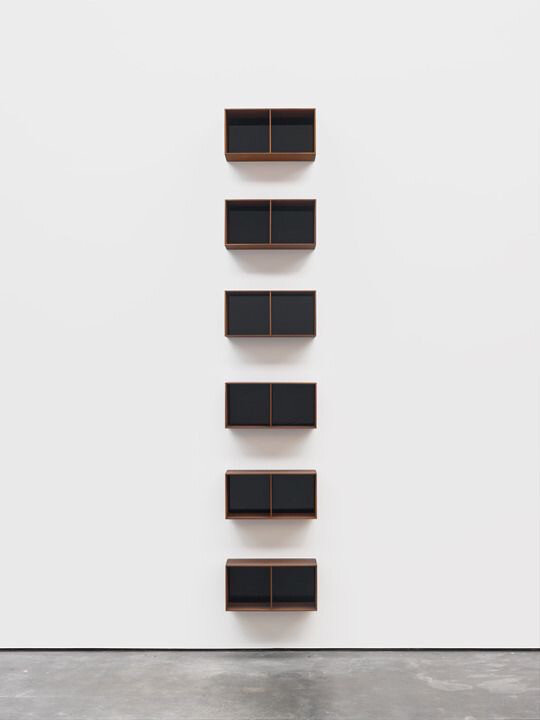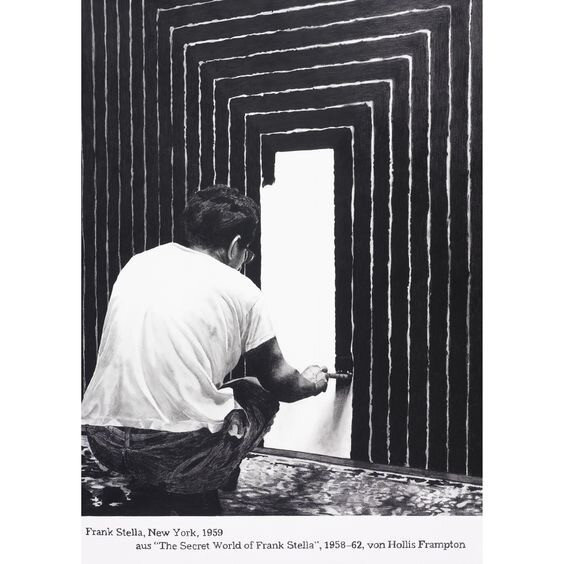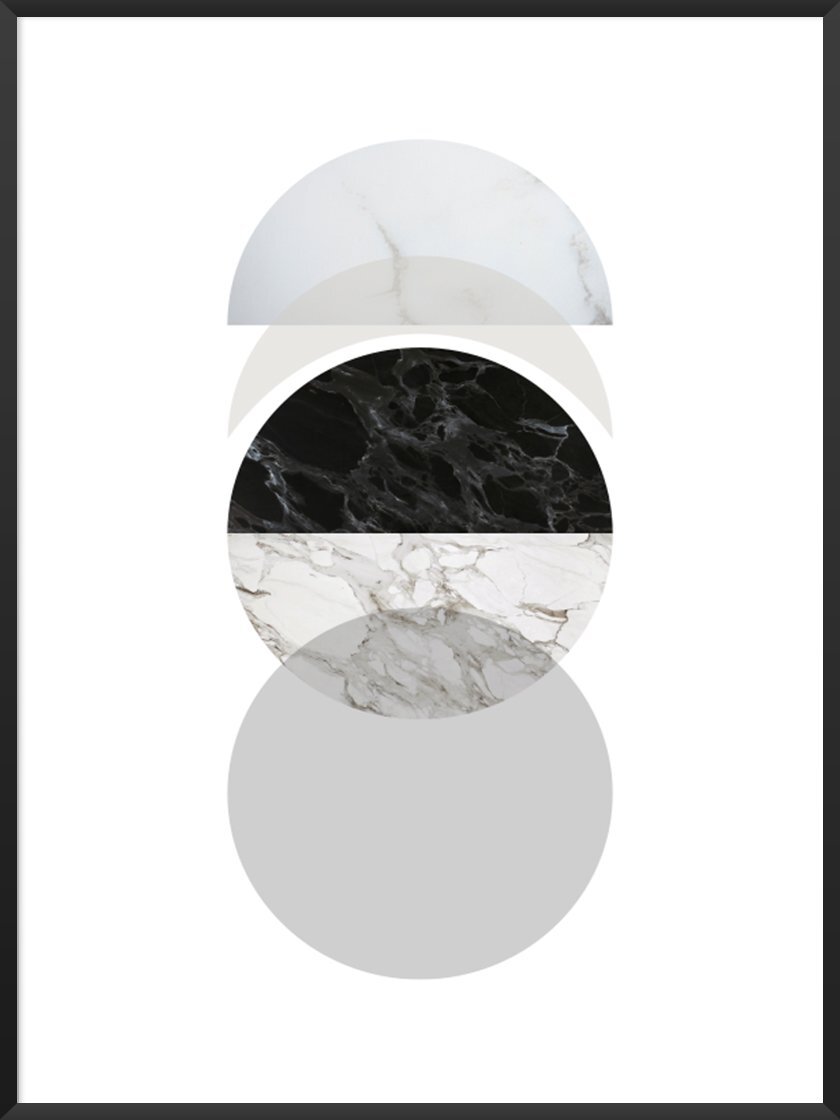The Minimalist Art Movement: A Time Warp to 1960s New York
Donald Judd, Untitled (1990)
For a movement which is all about simplicity, the minimalist art movement can be hard to get your head around. So, we’re here to demystify the pieces which changed the way the world perceived art.
The movement had a whole host of names before critics landed on ‘minimalism’. It was referred to as ABC Art, Object Art, Primary Structures. It even earned the label of Cool Art when it was first developing.
These names reveal some of the movement’s key attributes. For the first time, art objects were being reduced to just that - objects. Instead of art referring to something else, they were free-standing structures on their own. They were simple, as simple as ABC.
If this still sounds confusing then we should, in true minimalist style, let the pieces do the talking.
Here, we’ve listed minimalism’s key characteristics and zoomed in on some of the pieces which defined the movement. If you’re ready to look at art in a way you never have before, then keep reading!
What are the characteristics of minimalist art?
There are significant qualities which run through the movement.
In general, minimalist art wanted to get rid of expression, so that art was in its truest form. How did they manage that?
Art made out of everyday objects
They didn’t want to create art which was in any way above everyday life. Instead, they used the materials we all come into contact with. Art did not need to be elite. In fact, for it to be true art, it could not pose as anything more than it was.
The artist’s stamp was not visible
To the minimalists, true art didn’t refer to the person who made it. If the artist tried to put themselves into their work, if they tried to make their pieces biographical, the work no longer stood alone as a simple art object.
Art was made of uniform shapes and neutral colour palettes
A lot of minimalist art looks as if it could have been machine-made. Objects are arranged in geometric patterns and strong colours are rarely used. For the minimalists, this helps the hand of the artist blend into the art they produce more.
One of Carl Andre’s pieces, made out of commercial blocks
Who were the major artists In the Minimalist Movement?
A number of artists defined the Minimalist movement. Although each of them had a lot in common, they found different ways to express the minimalist ideology. Here’s a look at some of their defining pieces!
Frank Stella
When Frank Stella exhibited his Black Paintings (1958-1960) at the MoMA in 1959, it was obvious that a new generation of art had begun. His works were simplistic, made up of black brushstrokes in uniform lines. But, what lead Stella to create his artworks?
Stella graduated from university in 1957 and quickly moved to New York to be closer to the art he admired. He toured New York’s galleries and saw the likes of Jackson Pollock and Franz Kline out on display. There they were - the greats of Abstract Expressionism for him to enjoy.
Whilst he revelled in New York’s art scene, Stella still had to pay his rent. So, he painted houses in the local area to make ends meet. Can you see where we’re going with this? Stella took that same black enamel paint and commercial paint brush from his day-to-day job, and put them to canvas. And, that’s how his Black Paintings came to be!
If you take a closer look at his Black Paintings, you see that the black bands are made up of long, consistent brushstrokes. The slices of white in-between are simply raw canvas. It’s clear how his pieces were made. Their process is obvious. His paintings do not try to be anything but Black Paintings.
Stella saw his work as that of a factory worker, rather than esteemed artist. And, you can see why! This was the perfect beginning to an art movement which anonymised the artist. Frank Stella let his works speak for themselves.
Carl Andre
Carl Andre is the next of the minimalists on our list. He shared an apartment with Stella from 1958 to 1960, and was encouraged to work by his flatmate.
‘One day Frank Stella just said to me, “Look, if you paint another painting I’m going to cut off your hands […] you are a good sculptor now.”’
So, he took to sculpture! Andre’s works are also made from everyday materials. Let’s take Last Ladder (1959) as an example.
This piece was made from a single piece of timber found on a New York building site by Frank Stella and avant-garde filmmaker Hollis Frampton. Once the timber was back at Stella’s studio, Andre chiseled 5 hollows into the wood. Apart from this adjustment, the piece was left as it was. It no longer serves as the ladder it had been before. So, what had it become?
Andre continued to create works out of everyday objects. Equivalent VIII (1966) consists of firebricks arranged in a uniform rectangle. Instead of placing the piece on plinths, it sits on the floor. They become part of the room they are displayed in rather than being a focal point. Once more, the art, and the artist, is allowed to blend into the everyday.
Carl Andre, Last Ladder (1959)
Dan Flavin, “monument” 1 for V. Tatlin (1964)
Dan Flavin
Around the same time, New York native Dan Flavin experimented with another everyday material - lights.
He started by combining monochromatic canvases with fluorescent light strips. Flavin called these ‘icons’. They were styled in the same way as religious icon paintings in red, yellow, and black, and replicated shimmery gold-leaf with glowing lights. Instead of celebrating ‘the blessed saviour’, Flavin said his works were ‘constructed concentrations celebrating barren rooms.’ In true minimalist style, he didn’t seek to represent anything else. He only made the viewer away of the very ordinary room they were stood in.
By 1963, he abandoned the canvas to work exclusively with fluorescent tube lights. “monument” 1 for V. Tatlin (1964) was the first of his thirty-nine “monuments” dedicated to the Russian artist Vladimir Tatlin. Made of fluorescent light strips, the sculpture replicates the shape of Tatlin’s Tower. Though the structure was never built, it certainly had its effect on Flavin. For him, the structure represented a utopia which was never realised; one where art could be united with technology. In the process, Flavin got close to representing this partnership!
Donald Judd
Although he didn’t accept the label himself, art history recognises Donald Judd as another key part of the minimalist art movement. In fact, in true minimalist style, Judd did not believe that his works should be collected under a ‘movement’ at all.
"The new three dimensional work doesn't constitute a movement, school, or style. The common aspects are too general and too little common to define a movement. The differences are greater than the similarities"
Despite what he said, his work did share some of the characteristics as other works of this time. His piece ‘Untitled’ (1972) is a floor-based work, reminiscent of Andre’s brick compositions.
It looks like an open box, its base made out of red-enamelled aluminium. The copper walls to the box come to around waist-height. When the viewer looks inside, the red colour is reflected on the box’s internal walls, making it appear much brighter. Untitled is beautiful because of the materials it is made out of. Like the other minimalist works, the piece resists being read. It is simply a thoughtfully-made art object.
Donald Judd, Untitled (1972)
Sol LeWitt, A Wall Divided Vertically into Fifteen Equal Parts, Each with a Different Line Direction and Colour, and All Combinations (1970)
Sol LeWitt
And before we go, we have to mention Sol LeWitt! Sol, as everyone refers to him as, started working right at the end of the minimalist movement. Its influence can be seen in his work.
His piece, A Wall Divided Vertically into Fifteen Equal Parts, Each with a Different Line Direction and Colour, and All Combinations (1970) takes the question of authorship to the next level. Instead of creating an art piece himself, Sol wrote out a list of instructions that someone could draw from. His work was so minimalist, that it didn’t even initially exist and could be created by anyone.
And, if you haven’t already seen his letter of encouragement to Eva Hesse, you should check it out now! Although it's not a part of his body of work, it is the call to action all creatives need to read! Stick it on your wall or on the mirror you brush your teeth in front of in the morning. It’s funny that this letter has become one of the things Sol is remembered for. In terms of minimalism, it makes perfect sense! A letter to his friend, something of use, with advice in it, has become a piece of art.
The legacy of the minimalism art movement
Minimalist art truly left its legacy on the art world. It was the first movement to make a break from art being a form of expression. It questioned what art was, and what the role of the artist should be.
Minimalist art was also one of the first movements to commit to monochrome colour schemes. Black and white design is certainly still popular today, and will continue to be for a long time into the future.
Here at Project Nord, we have a whole range of posters which are indebted to the minimalist art movement. Have a browse through the designs!
Browse our full minimalist collection!
Written by Jessica Slater
Images sourced from Pintrest and the Project Nord website.












